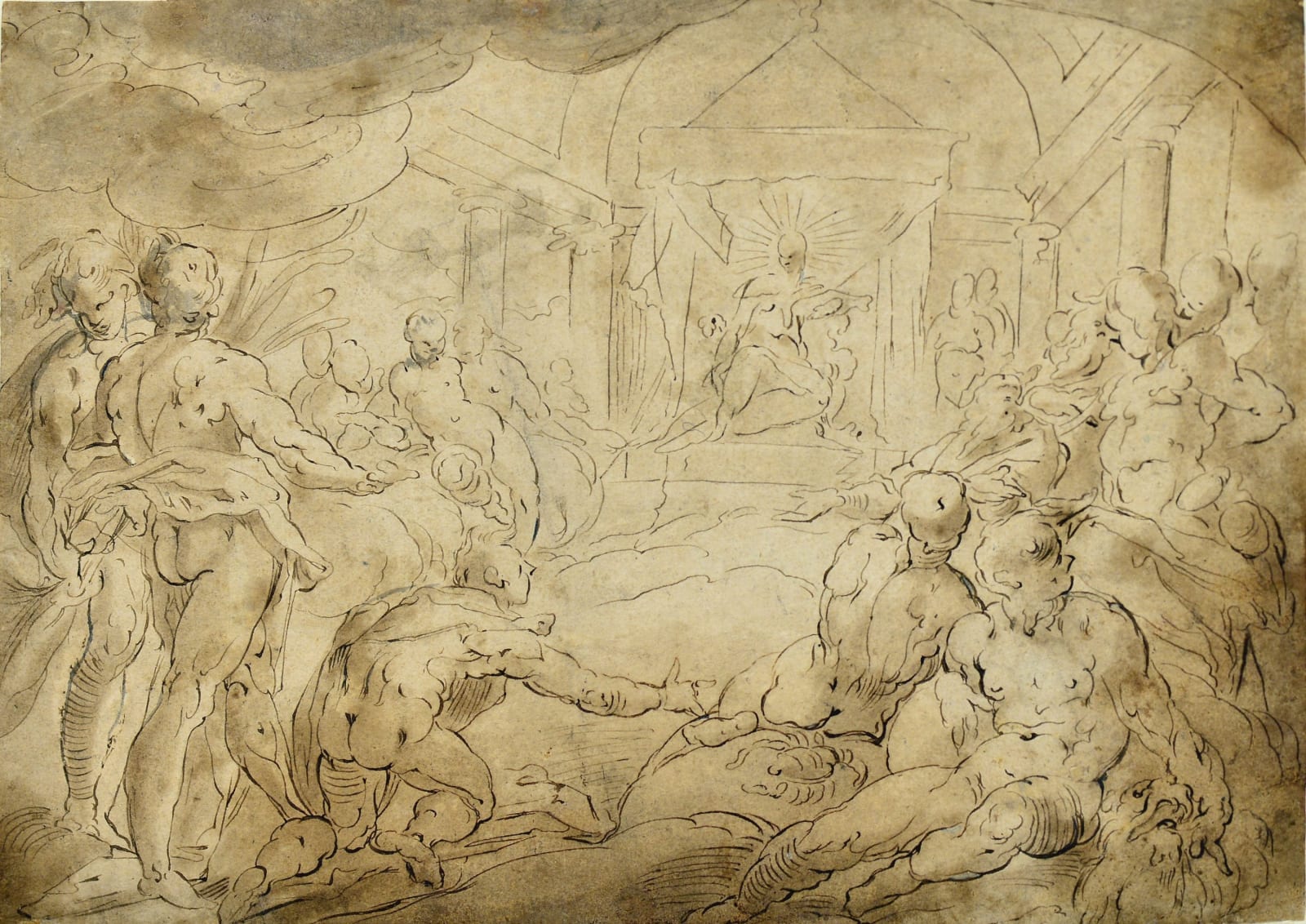Gerrit Pietersz (Amsterdam 1566 - 1612)
The current sheet depicts a mysterious, almost ethereal scene, with various men and women, sitting and standing in various poses, surrounding a god seated in the background under a canopy. The whole is set in a temple-like structure. Light seems to emanate from the center of the drawing, giving the scene an almost surreal feel. The iconography of the scene has been much debated. It has been suggested that the drawing represents the apparition of a saint or the judgment seat of Christ, but neither of these explains the “relaxed” poses of the onlookers, the presence of the dog (lower right) or the scorpion on the rock (lower middle). These scenes from Christian iconography must therefore be excluded. Instead, all of the depicted figures stem from classical mythology.
Set in a temple in the clouds, various gods and goddesses sit and stand around, some conversing, others relaxing. In the foreground to the extreme left stands the divine messenger Mercury, while the sitting man to the right could be Mars, the god of war, absent-mindedly caressing a dog, his animal symbol. Next to him, the man sitting on a rock with a scorpion is most probably Orion. His presence in the scene can be explained by the central figure, Apollo, the god of light and the sun, who sent a scorpion to kill Orion. In the background to the left, Venus can be made out. As all these divinities are also heavenly bodies – planets and stars – the scene looks like an allegorical representation of the heavens, centered around the star that illuminates all – the sun.
In fact, this scene is taken from Ovid’s Metamorphoses (Book II, 1-30), where the author narrates how Phaeton, Apollo’s son, visits the Palace of the Sun to meet his father. When he enters the palace, which Ovid describes as “towering up with raised columns”, Phaeton is unable to approach his father, as the latter’s crown of shining sun rays casts a blinding light. He therefore has to speak to his father from a distance; in the present drawing, he can be seen kneeling in the foreground, humbly addressing his divine father.
Stylistically, the drawing can be situated in the Netherlands, created somewhere during the last quarter of the sixteenth century. As there are many similarities with the work of Joachim Wtewael, an important northern mannerist artist from the period, the drawing must have originated from the workshop of an artist that was close to him. The present sheet can in fact be linked with several other drawings, all from the same artist, who has been identified as the painter and draughtsman Gerrit Pietersz.
Little is known about this artist. He was born in Amsterdam in 1566. He was taught by Cornelis van Haarlem, whose influence he picked up, and depicted mainly religious and mythological subjects. According to Karel van Mander, the artist spent several years working in Antwerp and in Rome, although this cannot be verified from the archival sources.
Provenance
Private collection, Germany.
